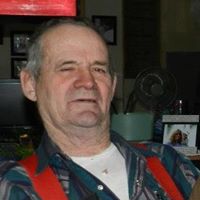Raymond Michael Goss
age ~67
from Loveland, CO
- Also known as:
-
- Raymond M Goss
- Mike E Goss
- Mike R Goss
- Phone and address:
- 1873 Garnet Ct, Loveland, CO 80537
Raymond Goss Phones & Addresses
- 1873 Garnet Ct, Loveland, CO 80537
- Lakeside, CA
- Lago Vista, TX
- 240 County Road 145, Georgetown, TX 78626 • 512 863-3045
- 422 Colorado River Rd, Georgetown, TX 78628 • 512 868-9572
- Grand Junction, CO
- Clifton, CO
- Orange, CA
Resumes

Raymond Goss
view sourceLocation:
United States

Raymond Goss
view source
Raymond Goss
view sourceLocation:
United States
Us Patents
-
Contact Server For Call Center For Syncronizing Simultaneous Telephone Calls And Tcp/Ip Communications
view source -
US Patent:6493447, Dec 10, 2002
-
Filed:Nov 21, 1997
-
Appl. No.:08/976162
-
Inventors:Raymond G. Goss - Austin TX
Donald Ravenscroft - Colorado Springs CO -
Assignee:MCI Communications Corporation - Washington DC
-
International Classification:H04M 300
-
US Classification:37926509, 37926601, 370352, 370401, 709203, 343700
-
Abstract:The present invention is a Contact Server that enables customers to submit call-back requests to a call center via the Internet, or virtually any other communications technology available. A call-back to the customer can be placed via any communications technology available. In its preferred embodiment, the Contact Server enables a call-back request to be submitted by a customer directly from an HTML page on a Web site, and have that same HTML page be presented to the agent that receives the call-back request. The agent can then place a telephone call to the number provided by the customer who submitted the call-back request, and at the same time, establish a TCP/IP communications session with the customer. This TCP/IP session can proceed between the agents Web browser and the customers Web browser, and the visible actions performed by the agent are transferred to the customer and displayed on the customers browser. The TCP/IP session proceeds simultaneous with the telephone call between the agent and the customer.
-
Contact Server For Call Center
view source -
US Patent:6654815, Nov 25, 2003
-
Filed:Oct 13, 1999
-
Appl. No.:09/417327
-
Inventors:Raymond G. Goss - Austin TX
Donald Ravenscroft - Colorado Springs CO -
Assignee:MCI Communications Corporation - Washington DC
-
International Classification:G06F 1516
-
US Classification:709248, 345749
-
Abstract:The present invention is a Contact Server that enables customers to submit call-back requests to a call center via the Internet, or virtually any other communications technology available. A call-back to the customer can be placed via any communications technology available. In its preferred embodiment, the Contact Server enables a call-back request to be submitted by a customer directly from an HTML page on a Web site, and have that same HTML page be presented to the agent that receives the call-back request. The agent can then place a telephone call to the number provided by the customer who submitted the call-back request, and at the same time, establish a TCP/IP communications session with the customer. This TCP/IP session can proceed between the agents Web browser and the customers Web browser, and the visible actions performed by the agent are transferred to the customer and displayed on the customers browser. The TCP/IP session proceeds simultaneous with the telephone call between the agent and the customer.
-
Enterprise Contact Server With Enhanced Routing Features
view source -
US Patent:6687241, Feb 3, 2004
-
Filed:May 24, 1999
-
Appl. No.:09/317561
-
Inventors:Raymond G. Goss - Austin TX
-
Assignee:WorldCom, Inc. - Clinton MS
-
International Classification:H04L 1264
-
US Classification:370352, 379265
-
Abstract:The present invention is an Enterprise Contact Server that enables customers to submit call-back requests to agents located at any one of a plurality of call centers via the Internet, or virtually any other communications technology available. A call-back to the customer can be placed via any communications technology available. In its preferred embodiment, the Enterprise Contact Server first selects from skill level tables and agent status tables a qualified agent to whom a call-back request can be routed. The Enterprise Contact Server then enables the call-back request to be submitted by a customer directly from an HTML page on a Web site, and have that same HTML page be presented to the selected qualified agent located at one of the plurality of call-back contact centers. The agent can then place a telephone call to the number provided by the customer who submitted the call-back request, and at the same time, establish a TCP/IP communications session with the customer. This TCP/IP session can proceed between the agents Web browser and the customers Web browser, and the visible actions performed by the agent are transferred to the customer and displayed on the customers browser.
-
Computer-Controlled Headset Switch
view source -
US Patent:6697465, Feb 24, 2004
-
Filed:Jun 23, 1998
-
Appl. No.:09/103115
-
Inventors:Raymond G. Goss - Austin TX
-
Assignee:MCI Communications Corporation - Washington DC
-
International Classification:H04M 1500
-
US Classification:379 9309, 370352, 370353, 370354, 370355, 370356, 379 9314
-
Abstract:A computer controlled communications switch for use at a communications center having an agent interface unit for conducting communication calls to and from an agent over both a telephone network and a computer network. The computer controlled communications switch comprises a switching unit having first and second states. When the switching unit is in the first state, the switching unit connects the agent interface unit to the telephone network, and when the switching unit is in the second state, the switch connects the agent interface unit to the computer network The switching unit is controlled by a computer including a predetermined program so that the switching unit is in the first state when a call is made to or from the agent interface unit via the telephone network, and the switching unit is in the second state when a call is made to or from the agent interface unit via the computer network.
-
Headset With Multiple Connections
view source -
US Patent:6748095, Jun 8, 2004
-
Filed:Nov 2, 1999
-
Appl. No.:09/433608
-
Inventors:Raymond G. Goss - Austin TX
-
Assignee:WorldCom, Inc. - Ashburn VA
-
International Classification:H04R 2500
-
US Classification:381374, 381375, 381388, 381390, 379430
-
Abstract:A headset and a method for using a headset, to communicate with two separate devices. The headset comprises a mounting member for mounting and holding the headset on the head of a wearer, at least a first speaker, and means for connecting the speaker to the mounting member for holding the speaker adjacent an ear of the wearer. The headset further comprises first and second microphones, and a boom member connecting the microphones to the mounting member for holding the microphones adjacent the mouth of the wearer. A signal conducting circuit is provided for transmitting input communication signals from at least the first device to the first speaker, and for transmitting output communications from the first and second microphones to the first and second devices respectively.
-
Contact Server For Call Center
view source -
US Patent:7783755, Aug 24, 2010
-
Filed:Aug 27, 2003
-
Appl. No.:10/648427
-
Inventors:Raymond G. Goss - Austin TX, US
Donald Ravenscroft - Colorado Springs CO, US -
Assignee:MCI Communications Corporation - Ashburn VA
-
International Classification:G06F 15/173
-
US Classification:709225, 709226, 709227
-
Abstract:The present invention is a Contact Server that enables customers to submit call-back requests to a call center via the Internet, or virtually any other communications technology available. A call-back to the customer can be placed via any communications technology available. In its preferred embodiment, the Contact Server enables a call-back request to be submitted by a customer directly from an HTML page on a Web site, and have that same HTML page be presented to the agent that receives the call-back request. The agent can then place a telephone call to the number provided by the customer who submitted the call-back request, and at the same time, establish a TCP/IP communications session with the customer. This TCP/IP session can proceed between the agent's Web browser and the customer's Web browser, and the visible actions performed by the agent are transferred to the customer and displayed on the customer's browser. The TCP/IP session proceeds simultaneous with the telephone call between the agent and the customer.
-
Method And Apparatus For Routing Wafer Pods To Allow Parallel Processing
view source -
US Patent:8275478, Sep 25, 2012
-
Filed:Mar 13, 2009
-
Appl. No.:12/403632
-
Inventors:Raymond G. Goss - Austin TX, US
Carmen A. Maxim - Austin TX, US
Jan Rothe - Dresden, DE -
Assignee:Globalfoundries Inc. - Grand Cayman
-
International Classification:G06F 19/00
-
US Classification:700112, 700117, 414217
-
Abstract:A method includes designating a plurality of wafers as members of a group. A first subset of the wafers is housed in a first wafer pod and a second subset of the wafers is housed in a second wafer pod. The first wafer pod is routed to a first tool, and at least a first operation is performed on the wafers in the first subset using the first tool. The second wafer pod is routed to a second tool, and the first operation is performed on the wafers in the second subset using the second tool. The wafers in the first and second subsets are consolidated following the performing of the first operation.
-
Flexible Job Preparation And Control
view source -
US Patent:8335581, Dec 18, 2012
-
Filed:Jun 12, 2009
-
Appl. No.:12/483891
-
Inventors:Raymond G. Goss - Austin TX, US
Diwas Adhikari - Austin TX, US -
Assignee:Globalfoundries Inc. - Grand Cayman
-
International Classification:G06F 17/00
-
US Classification:700100, 700108, 700112, 700226, 700121, 700149, 700102, 700113, 700101, 700 96, 700230, 41422201, 41422202, 414281, 414937
-
Abstract:Preparation of a wafer processing or measuring tool for a job can be initiated prior to assigning a wafer carrier to deliver wafers to the tool. The automated process may include transfer of wafers from a container, such as a bare wafer stocker, or between two tools.
Flickr

Raymond Goss
view source
Raymond L. Goss
view source
Raymond Goss
view source
Raymond Goss
view source
Raymond E. Goss
view source
Raymond Goss
view sourceMyspace
Googleplus

Raymond Goss

Raymond Goss
Classmates

Raymond Goss
view sourceSchools:
Pleasant Hill High School Hemingway SC 1996-2000
Community:
Trudie Goss

Raymond Goss
view sourceSchools:
Pembroke Primary School East Pembroke NY 1976-1978, Pembroke Intermediate School Corfu NY 1978-1982, Pembroke High School Corfu NY 1982-1984
Community:
Terry Cummings, Albert Mccowen

Raymond Goss
view sourceSchools:
Augusta High School Augusta MT 1960-1964
Community:
Aaron Daniel, Clint Folden, Jennifer Kress, Sue Taylor, Shirley Damon

Raymond Goss
view sourceSchools:
Vinita High School Vinita OK 2004-2008
Community:
Andrew Hillger, Jessica Reed, Stephanie Jackson, Chantilly Watkins, Becky Gill, Sarah Schwab, Megan Greenwalt, Daniel Garrett, Martin Honeywell, Toni Spaulding

Pleasant Hill High School...
view sourceGraduates:
Raymond Goss (1996-2000),
Jarvis Wright (1995-1999),
Kernisha Lesane (1992-1996),
Justin Hicks (1993-1997)
Jarvis Wright (1995-1999),
Kernisha Lesane (1992-1996),
Justin Hicks (1993-1997)

Lewistown High School, Le...
view sourceGraduates:
Mark Vaux (1977-1981),
Ray Goss (1949-1953),
Lauren Reigle (1985-1989),
Kimberly Markley (1987-1991)
Ray Goss (1949-1953),
Lauren Reigle (1985-1989),
Kimberly Markley (1987-1991)
Youtube
Get Report for Raymond Michael Goss from Loveland, CO, age ~67








